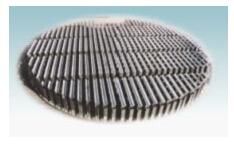What is distillation?
Distillation, involves the process of converting a liquid into a vapor and then condensing it back into liquid form. The simplest example of this is the deposition of vapor in a kettle as distilled water droplets on a cold surface. Distillation is used to separate liquids from non-volatile solids, such as in the separation of fermented materials from spirits, or in the separation of liquids having two or more different boiling points, such as in the separation of gasoline, kerosene, and lubricating oils from crude oil. Other industrial applications include the processing of chemical products such as formaldehyde and phenol, and desalination of seawater.

Methods of Distillation
Most distillation methods used in industry and laboratory research are variations of simple distillation. This basic operation requires the use of a still or distiller in which the liquid is heated, a condenser to cool the vapor, and a receiver to collect the distillate. In heating a mixture of substances, the most volatile or lowest boiling point substances are distilled first and the others are distilled later or not distilled at all. This simple apparatus is perfectly satisfactory for purifying liquids containing nonvolatile substances and is adequate for separating liquids with widely varying boiling points. For laboratory use, the device is usually made of glass and connected to a cork, rubber stopper or frosted glass fitting. For industrial applications, larger metal or ceramic devices are used.
Multi-effect distillation
Multi-effect distillation, often called multi-stage flash distillation, is another elaboration of simple distillation. This operation is used primarily by large commercial desalination plants and does not require heat to convert the liquid to vapor. The liquid is simply transferred from a vessel at high pressure to a vessel at lower pressure. The reduced pressure causes the liquid to evaporate rapidly; the resulting vapor is then condensed into a distillate.
Steam Distillation
Steam distillation is another method of achieving distillation at a temperature below the normal boiling point. It is suitable when the material being distilled is immiscible (cannot be mixed) and does not react chemically with water. Examples of such materials include fatty acids and soybean oil. The usual procedure is to pass steam into the liquid in the distiller to provide heat and cause the liquid to evaporate.
Vacuum Distillation
A variation of the decompression process uses a vacuum pump to produce a very high vacuum. This method is called vacuum distillation and is sometimes used to process substances that normally boil at inconveniently high temperatures or decompose when boiling at atmospheric pressure.
Fractional distillation
A method called fractional distillation or differential distillation has been developed for certain applications,such as petroleum refining, because simple distillation is ineffective for separating liquids with boiling points close to each other. In this operation, the vapors from the distillation are repeatedly condensed and re-evaporated in an adiabatic vertical column. Of particular importance in this regard are the distillation head, the fractionation column and the condenser, which allow some condensed vapor to be returned to the distillation. The goal is to achieve the closest possible contact between the rising vapor and the descending liquid so that only the most volatile substances are allowed to enter the receiver as vapor, while returning the less volatile substances to the distillers as liquid. The purification of the more volatile components by this contact between the countercurrent vapor and liquid streams is known as distillation or concentration.














